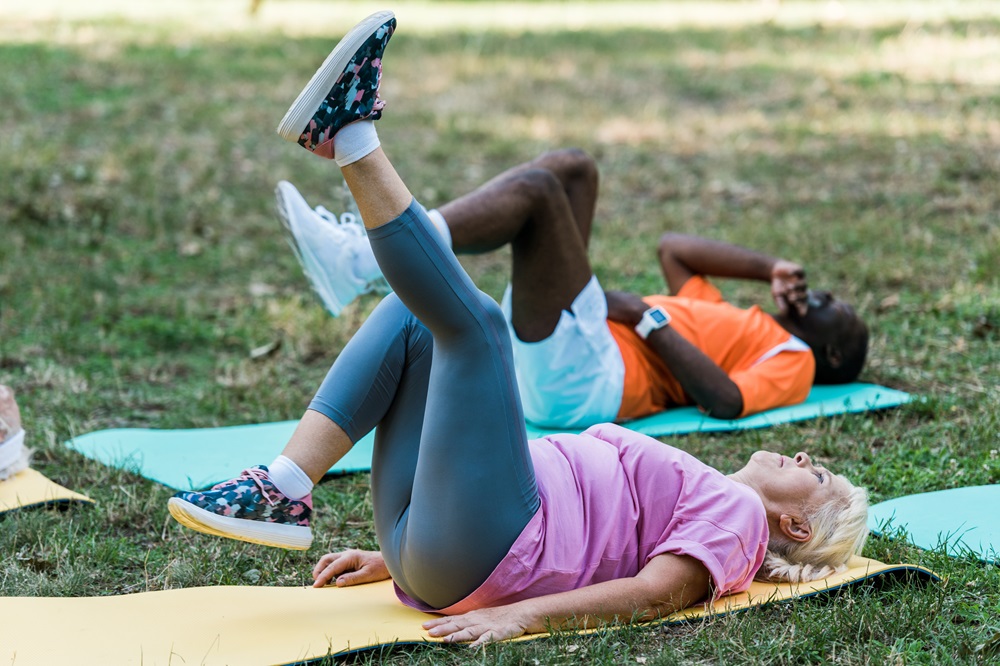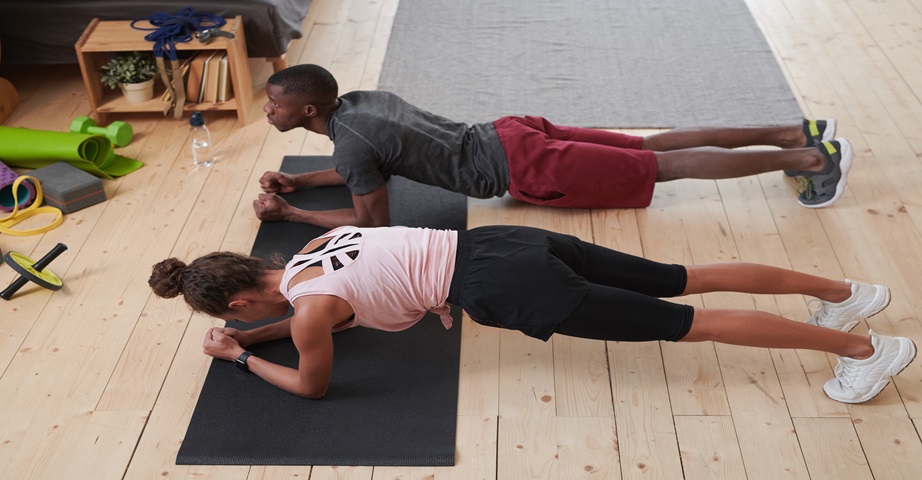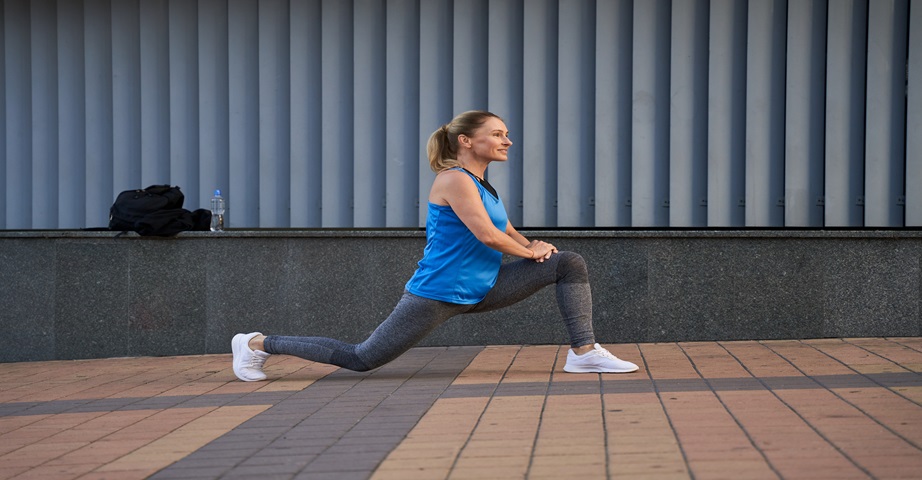Sciatica exercises – effective relief for pain

Sciatica, a troublesome pain appearing in the lumbar spine, can be extremely uncomfortable and may hinder - or even prevent - normal daily activities. However, there are effective exercises for sciatica that can help relieve unwanted symptoms and serve as an excellent way to prevent another flare-up. What is the most effective method for treating sciatica? Can you exercise with sciatica? How can you release the sciatic nerve?
Table of Contents
- Sciatica – Where Does the Pain Come From?
- Can You Exercise with Sciatica?
- Stretching Exercises for Sciatica
- Strengthening Exercises for Sciatica
- Exercises for Sciatica Affecting the Glutes
- Exercises for Femoral Sciatica
- Top 3 Sciatica Exercises – Quick Pain Relief
- Summary – How Long Does the Sciatic Nerve Take to Heal?
Sciatica – Where Does the Pain Come From?
Sciatica is an intense pain of the sciatic nerve that can have many causes. Among the most common reasons for sudden and severe pain in the lumbar-sacral region are a herniated disc pressing on the sciatic nerve and degenerative changes in the spine. A sedentary lifestyle, excess body weight, and poor posture can also negatively affect the sciatic nerve, contributing to limb numbness, muscle weakness, and sharp, burning pain in the lower back that can radiate to the thighs, buttocks, or hips.
Can You Exercise with Sciatica?
Proper management during an acute sciatica attack focuses primarily on consulting a doctor and taking the right medications to help relieve pain symptoms. When severe back pain prevents normal functioning, rest and reducing spinal load are usually recommended. For this reason, during the acute phase of sciatica, sciatic nerve exercises are not advised, as they may do more harm than good.
Once the acute phase subsides, exercises for sciatica can provide valuable support in relieving symptoms and restoring full mobility. Current data suggests that sciatica exercises can strengthen the lower back and stretch tight muscles. Regular physical activity aimed at supporting the back can help maintain correct posture and aid in weight reduction, which can also play a preventive role, lowering the risk of future flare-ups.
Sciatica and Walking – Does It Help?
Low- to moderate-intensity aerobic activity can have a positive effect on reducing sciatic nerve pain and speeding up the body’s recovery processes. For many people with sciatica, walking can strengthen the lower back.
Initially, it is recommended to cover short distances of no more than 1 mile (1.5 km), walking at a slow but steady pace. Over time, as pain symptoms ease, you can gradually increase both the distance and walking speed.
Some data suggests that an optimal walk for sciatica lasts about 30 minutes daily. However, these values should be treated as a guideline, with adjustments made according to individual abilities.
If needed, you can take regular breaks while walking. Using trekking poles can also make walks more comfortable and enjoyable.
Sciatica and the Gym – Is Weightlifting Safe?
Although sciatica is not a direct contraindication for strength training, it’s wise to consult a doctor or physical therapist before starting a gym routine to identify safe exercises and avoid those that could worsen symptoms.
During severe pain episodes, it’s best to avoid exercises with heavy loads, such as deadlifts, barbell presses, or weighted squats, focusing instead on movements that reduce spinal muscle tension and strengthen the lower back without straining it.
When training with sciatica, avoid exercises involving deep bending or twisting of the torso, and choose movements that do not cause discomfort or aggravate pain.
Which Exercises Help Relieve Sciatica Pain?
After an acute sciatica episode passes, it’s worth including exercises in your daily routine that support the sciatic nerve, strengthen the back and spine, and reduce discomfort.
Regularly performing sciatica exercises can improve physical fitness, increase muscle flexibility, and positively impact spinal mobility and stability, expanding your range of motion.
To reduce tension and release the sciatic nerve, it’s best to include relaxation exercises, strengthening movements, and light aerobic activities in your training plan. Massage or self-massage can also be valuable tools in sciatica therapy. What are the benefits of each type of exercise, and which ones should you choose?

Stretching Exercises for Sciatica
Stretching exercises for sciatica can help lengthen the muscles of the back and glutes, easing pain symptoms. Recommended activities include:
- Piriformis stretch – bend the knee of the painful leg and straighten the other leg. Then draw the bent knee diagonally toward the opposite shoulder until you feel a stretch in the buttock. Hold for about 30 seconds, relax, and repeat.
- Seated forward bend – sit on the floor with legs straight and lean forward to touch your toes, keeping your back straight and breathing steadily. Hold for about 30 seconds, then return to sitting and repeat.
- Cat stretch – from an all-fours position, tuck your head in and arch your back upward on the exhale, forming a curve. Hold for a few seconds, then lift your head, straighten your back, and repeat.
Strengthening Exercises for Sciatica
These exercises complement stretching by reducing the risk of another flare-up and strengthening the lower back, glutes, and core. Examples include:
- Plank – a core exercise that also strengthens the back. Support your weight on forearms and toes, keeping your head aligned with your spine. Hold for 30 seconds and return to the starting position.
- Glute bridge – lie on your back with knees bent and arms at your sides. Engage your glutes and hamstrings to lift your hips until they form a straight line with your shoulders and knees. Hold for 30 seconds, then lower down.
- Bird dog – from all fours, extend your right leg and left arm, hold for a few seconds, return to start, and switch sides.
Exercises for Sciatica Affecting the Glutes
For sciatica radiating to the gluteal muscles, the following can help:
- Pigeon pose – from downward-facing dog, bring your left leg forward so the foot is near your right hip, straighten the right leg, press hips to the floor, and stretch arms forward. Hold for about 20 seconds, then return to start.
- Quadriceps stretch – kneel with knees together, then slowly lean back until lying down. Hold for 20 seconds and return to kneeling.
- External hip rotation – sit with feet pressed together and knees bent outward. Gently press knees toward the floor until you feel a stretch.
Exercises for Femoral Sciatica
If sciatica pain affects the thighs, consider:
- Lunges – step forward with one leg, bending both knees, keeping the torso upright. Lower until the back knee nearly touches the floor, then push back to the start. Repeat on both sides.
- Wall sit – lean against a wall in a sitting position without a chair, weight in your legs. Hold for several seconds, then stand back up.
- Single lunge hold – stand in a wide stance, feet turned outward. Shift your weight onto one leg while straightening the other, hips pushed back. Hold for 30 seconds, then switch sides.

Top 3 Sciatica Exercises – Quick Pain Relief
Sciatica exercises can be valuable for people dealing with pain and discomfort. While the best choices are those tailored to individual abilities, some of the most frequently recommended include:
- Cat stretch – a classic in almost every sciatic nerve stretching routine.
- Seated forward bend – a safe, simple stretch.
- Plank – builds both superficial and deep muscles.
Summary – How Long Does the Sciatic Nerve Take to Heal?
Recovery time after a sciatica attack varies depending on factors such as the extent of nerve damage and the patient’s age. Light, regular physical activity and exercises prescribed by a physical therapist can speed up the return to full mobility.
Exercising for sciatica can not only aid recovery but also strengthen the back muscles, increase spinal range of motion, and improve mobility. As a result, targeted stretching and strengthening of the sciatic nerve area is an excellent therapeutic and preventive approach, lowering the risk of another episode.
Bibliography:
- https://rwa-kulszowa.com.pl/cwiczenia-na-rwe-kulszowa-najlepsze-przyklady/
- https://pubmed.ncbi.nlm.nih.gov/38840988/
- https://pubmed.ncbi.nlm.nih.gov/35120149/
- https://pubmed.ncbi.nlm.nih.gov/33017565/
- https://pubmed.ncbi.nlm.nih.gov/38034203/
- https://pubmed.ncbi.nlm.nih.gov/36963709/

